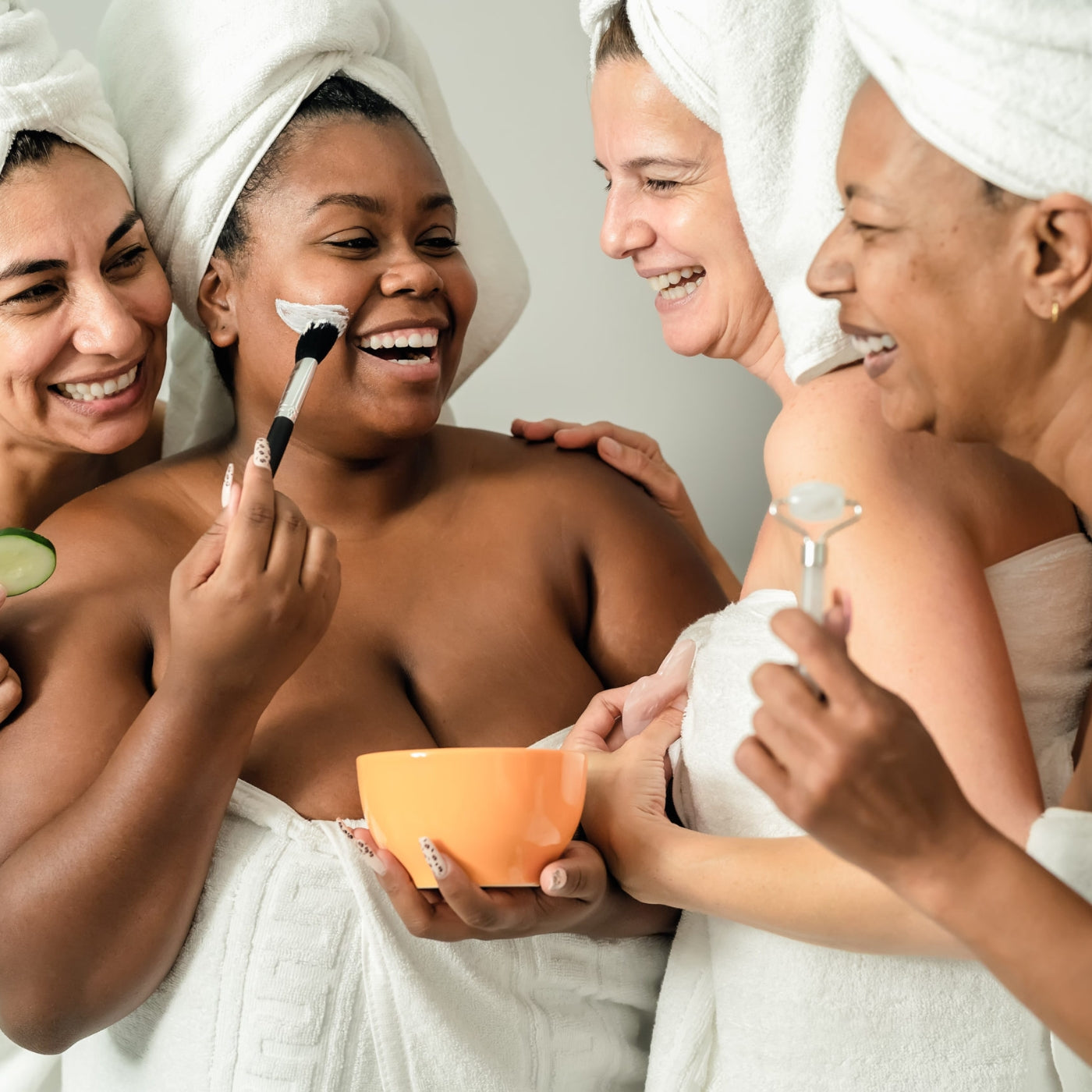
When you enter your 30s, 40s, 50s, or 60s, you don't require the same skincare routine that you did when you were in your 20s. Your skin is continuously changing (on the inside and outside), and your willingness to spend time and money on your face is also constantly evolving.
Your skin requires care that is specifically adapted to the natural changes that take place as you age at every stage of life. Aging skin is thinner and more delicate, produces less collagen and elastin, and produces fewer oils, which causes dry skin. You should be knowledgeable about changes to the skin at each stage of life if you want to maintain a healthy, youthful appearance for as long as possible.
Skincare in your 20s
While it's important to embrace your young glow in your 20s, you should also establish a skincare program to help keep it as you age. The most important thing is to use SPF every day to defend against the sun's harmful rays. Utilizing a moisturizer with SPF built in is one unconscious approach to accomplish this. Making long-term investments in high-quality skincare and makeup is another essential step.
For someone in their 20s, the optimal morning and evening skincare routine should entail cleansing, toning, a nourishing face oil, and a moisturizer (with SPF).
Skin health problems:
Although the majority of people's hormone levels that contribute to acne have begun to balance out, many adults in their 20s still struggle with acne. This is particularly true for women because hormonal changes during the course of their menstrual cycle or during pregnancy might result in an increase in oil production.
Challenges might also arise from a slower skin cell turnover. You could start to notice regions of skin that are flaky or dry.
Fine wrinkles may start to form as collagen and elastin levels decline and new skin cells are created less regularly.
Skincare recommendations:
The two components of 20s skin care are moisturisation and protection. Many of the wrinkles, pigmentation abnormalities, and other aging symptoms that manifest in your 30s and 40s are brought on by exposure to natural or artificial UV rays at this stage of life. The following are some essentials of skincare:
Sun protection: 90% of the signs of aging skin are caused by exposure to UV radiation. Sunscreen is the most important step in any skincare routine, but it is often forgotten about. It's important to wear sunscreen every day, even if you're not spending time in the sun. Sunscreen will help to protect your skin from harmful UV rays which can cause premature aging and wrinkles. Choose a sunscreen with an SPF of at least 30 and apply it every morning.
Moisturise: To retain a more youthful appearance and avoid dry skin, moisturise to keep your skin cells moisturised and plump. Moisturizing is important as it helps to keep your skin hydrated and prevents dryness. We love to use a hydrating facial oil that will provide the ultimate nourishment and hydration for both oily and acne-prone skin and dry, sensitive skin.
Cleansing: Cleansing is the very first step in any skincare routine. It's important to cleanse your face twice a day, in the morning and at night, to remove all the dirt, oil and makeup that has accumulated on your skin throughout the day. There are a variety of cleansing products available, which can make it difficult to know which cleanser to choose. Discover your perfectly matched skincare routine and cleanser with our Skin Type Quiz here.

Skincare in your 30s
Skin often changes as you get older, especially as you approach 30. Your first step should be to change your moisturiser to one that has anti-aging advantages because this is the point at which your anti-aging products begin to play a larger role in your skincare routine. In order to rejuvenate your skin and body overnight and prevent premature aging, getting enough sleep is equally essential.
Skin health problems:
In the twenties and into the thirties, collagen and elastin production decreases. The skin's appearance changes as a result of this. In particular, your skin will start to sag, droop, and lose volume.
Every 10 to 20 days, children, teenagers, and adults in their early 20s experience a full turnover of their skin cells. This transition may take 30 days or more in your 30s. As a result, the appearance becomes duller, the skin tone becomes uneven, and parts of the skin thicken.
Many adults wait until they are in their 30s to start a family, and pregnancy can have a variety of negative effects on the skin. The most evident is that changes in hormone levels affect how your skin generates oils and pigment. Additionally, stretch marks that persist after giving birth are more likely to appear during pregnancy.
Patches of dark, discoloured skin, mainly on the face, known as melasma or hyperpigmentation, start to occur in your 30s. Sun exposure causes these spots, thus it's crucial to use sunscreen and limit your exposure to UVA/B rays. Although they may also develop during pregnancy, these patches usually disappear after giving birth.
Skincare recommendations:
You should continue moisturising and using sunscreen throughout your 30s, just like you do in your 20s. Additionally, in your 30s, you should begin including anti-aging skincare products in your routine. An antioxidant like vitamin C is present in large quantities in many anti-aging serums. This increases collagen synthesis and maintains skin suppleness.
You must regularly apply an exfoliating product as your skin's cell turnover rate slows down. Exfoliation is important as it helps to remove dead skin cells from the surface of your skin. This will help to brighten your complexion and allow your skincare products to work better. You should exfoliate once or twice a week, depending on your skin type. There are two types of exfoliants: physical exfoliants (like scrubs) and chemical exfoliants (like AHAs and BHAs).
Physical exfoliants are more suitable for people with oily skin, while chemical exfoliants are better for people with dry or sensitive skin.
On the other hand, chemical exfoliants are more gentle and can be used more frequently.
Take a look at our recommendations, for oily, acne-prone skin and dry, sensitive skin.
Skincare in your 40s
Skincare in your 40s is about perfecting your skincare routine by giving it the ingredients it needs to stay youthful, radiant, and plump. You already have a good routine for delaying aging, which you started in your 30s.
Start using skincare products that gently exfoliate your skin, and replace your night cream with one that helps your skin regenerate while you sleep. To achieve the optimum effects, another focus should be on stacking hydrating products (serum, face oil, moisturiser).
Skin health problems:
The turnover of skin cells and collagen and elastin synthesis both continue to decline as they did in the 20s and 30s.
In your 40s, your lymphatic system will start to alter. Your skin and body can be detoxified using this approach. These toxins are secreted more slowly as we become older, which leads to an accumulation of toxins in the skin. Inflammation and puffiness may result from this, particularly around the eyes.
In your 40s, sebum (skin oil) production decreases, causing your skin to become dryer and your fine lines to become more noticeable. Reduced estrogen levels during perimenopause in women might result in thinner, drier skin.
Skincare recommendations:
You should keep using sunscreen and moisturiser every day, just like you did in your 30s. Anti-aging creams and vitamin C supplements should be begun in your 40s if you didn't begin taking them in your 30s. Your body may now have trouble retaining moisture, which makes dehydration an issue. Water consumption is recommended for all ages, but beyond the age of 40, it becomes more essential.

Skincare in your 50s
Your skin needs treatments and facials that sculpt and contour it as you get older because you might start to notice a loss of one and definition at 50 and beyond. Now is the moment to switch back to products that support skin that looks younger, plumps the skin, and reduces deep creases and lines.
Skin health problems:
In your 50s, the production of collagen, elastin, and moisture all continues to drop, causing the skin to sag and relax, particularly on the face, neck, and décolletage. Additionally, the skin continues to thin, increasing the likelihood of bruising, bleeding, and inflammation.
In the late 40s or early 50s, the amount of hyaluronic acid in the dermis (second layer of skin) begins to decline, which might further raise the risk of skin damage.
Menopause usually begins in a woman's late 40s or early 50s. Numerous issues with the health of the skin, including dry, thin skin and uneven skin tone, are brought on by the decline in estrogen levels. Adult acne risk is also increased by menopause. As we become older, inflammation gets worse.
Skincare recommendations:
You should keep utilising your anti-aging products, staying hydrated, using sunscreen, and moisturising every day when you enter your 50s. Inflammation should also be kept to a minimum by avoiding skin-irritating hygiene products, consuming moderate amounts of alcohol and caffeine, and minimising sun exposure.
In your 50s, circulation can also become a problem. Blood flow is crucial for delivering essential nutrients to cells. When circulation is restricted, the skin may appear less healthy-looking because the skin cells are not getting the nutrients they require to stay youthful. Staying active will help your circulation. By gently rubbing the skin while cleansing, you can also immediately increase circulation.
Skincare in your 60s and beyond
It's never too late to begin anti-aging treatments, which is the primary message that doctors want people in their 60s to understand. Regular visits to your dermatologist will help you maintain your best appearance over time.
In your 60s and beyond, it becomes more challenging to change the appearance of your skin, but with the right care, you can still slow the effects of aging. The aim now should be to preserve skin and overall body wellness. Good relative health increases the likelihood of maintaining a youthful appearance.
Skin health problems:
In your 60s and beyond, you'll continue to experience all of the preceding skin health issues, including decreased collagen, elastin, moisture, and circulation as well as changes in hydration and pigmentation.
You'll also be more likely to develop skin growth. The majority of these growths are benign, but they alter the appearance of your skin. Examples include skin tags and papules (oil-filled pimples). Due to lower estrogen levels, postmenopausal women will continue to see changes in their skin's health.
Skincare recommendations:
Continue using sunscreen, moisturiser, anti-aging products, hydration, exfoliation, pain relievers, and circulation as you did before. You can also increase collagen formation by using these components, which are frequently included in vitamin C serums.

In conclusion,
It's no secret that as you get older, your skin ages. These changes can be a little stressful as you try to figure out a brand-new skincare routine, whether you see a loss of elasticity or volume, a few small wrinkles here and there, or discolouration where you didn't previously have it.
A dermatologist can assist you in maintaining the healthiest appearance possible, regardless of the age of your skin. A dermatologist may advise more sophisticated procedures in addition to working with you to identify the ideal at-home skin care products and methods to further enhance the skin's appearance.
